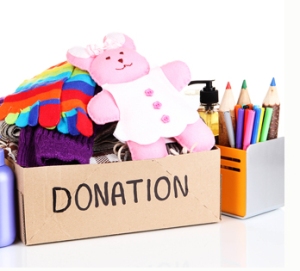I got you on the “how to live forever” part, didn’t I? Okay, it depends on your interpretation of forever, but let’s just say “longer than you might otherwise expect,” especially when you consider your other life habits. But what does health and longevity have to do with the residents of Roseto, Pennsylvania? You probably have a general idea of where I’m going with this, but pull up a chair and pour yourself a glass of (red) wine anyway. If you haven’t heard this story before, you’ll find it a cool little piece of Italian-American history.
 nce upon a time in America, as long ago as the 1950s, there was a physician named Benjamin Falcone who practiced in Pennsylvania near the small towns of Bangor and Nazareth. During the 17 years he had been treating patients in the vicinity, Dr. Falcone noticed that older residents from a third nearby town, called Roseto, hardly ever needed to be seen for heart problems, even though the rate of heart attacks within the other two towns, and across the United States in general, were increasing steadily.
nce upon a time in America, as long ago as the 1950s, there was a physician named Benjamin Falcone who practiced in Pennsylvania near the small towns of Bangor and Nazareth. During the 17 years he had been treating patients in the vicinity, Dr. Falcone noticed that older residents from a third nearby town, called Roseto, hardly ever needed to be seen for heart problems, even though the rate of heart attacks within the other two towns, and across the United States in general, were increasing steadily.
Could it have something to do with their relative seclusion? The inhabitants of Roseto had emigrated almost en masse from an Italian village called Roseto Valfortore, located in the province of Foggia. Hoping to escape poverty in their homeland, about 1,200 inhabitants of Roseto Valfortore had been issued passports bound for America by 1894. After they arrived, existing cultural pressures and social restrictions prevented them from scattering and melting into the local populations, so they eventually built their own community on a rather confined hillside, essentially separated from nearby English, Welsh or German immigrants. By 1912, Roseto’s population had exceeded 2,000 and it incorporated to become the first American municipality governed by Italians. By the time Dr. Falcone began to notice the extraordinary heart health of its residents, Roseto was a thriving town, accepted and even admired by neighboring Bangor and Nazareth, and served by the same doctors and hospitals.
One day, Dr. Falcone attended a local medical society talk given by a visiting physician from the University of Oklahoma, Dr. Stewart Wolf, who frequently spent summers at a nearby farm. Dr. Falcone invited Dr. Wolf out to a local pub for a beer and in the course of their conversation, mentioned the strange phenomenon he had noticed in the Roseto residents.
It was now 1961, and Wolf was intrigued enough to engage some of his colleagues from the University of Oklahoma in taking a deeper look at the Roseto effect. Along with sociologist John G. Bruhn, the research team began to compare medical histories, physical exams, and lab tests in a large sample of Rosetans—as well as the inhabitants of Bangor and Nazareth—hoping to find the key to the apparent health and happiness of this unusual community.
What they found stymied them. Yes, the evidence confirmed it was true that coronary heart disease and death from myocardial infarction (heart attack) was strikingly lower in Roseto than in its neighboring towns. Importantly, mental illness (including senile dementia) was also much lower: half the rate of Bangor, and only a third the rate of Nazareth. But at first, no one could understand why.
“The findings were surprising because of a greater prevalence of obesity among the Rosetans,” wrote Wolf and Bruhn in their report, published in 1979 under the title, The Roseto Story: An Anatomy of Health. “A meticulous study of dietary habits established that Rosetans ate at least as much animal fat as did the inhabitants of Bangor and Nazareth.” This was reflected, not only in the high obesity rates of Roseto, but also in the fact that the town’s rates of hypertension, diabetes, and measures of serum cholesterol concentration closely matched those of the other communities. Smoking and exercise habits were also similar, and the researchers were able to eliminate ethnic and genetic factors from the mix. After all, inhabitants who left Roseto to live in other communities soon became subject to the higher death rates that plagued the rest of the nation.
What, then, could explain Roseto’s strange effect? (And no, people weren’t drinking from a special communal well or making mysterious concoctions from South American miracle plants). Having already ruled out diet, exercise, genetics, and other factors that the medical community has long believed to be “risk factors” for heart disease, the researchers turned to studying the way Rosetans lived.
What they discovered was that their initial rejection by outlying communities had forced Rosetans to turn to one another for support and mutual help. Ultimately, the researchers found, the only real differences between Roseto and its neighboring communities were social ones. Roseto’s citizens enthusiastically took on the responsibility of being their neighbor’s keeper.
The researchers described the character of the townsfolk as buoyant, fun-loving, enterprising, optimistic, cohesive, and mutually supportive. “Our first sociological study of Roseto revealed that crises and problems were coped with jointly by family members with support from relatives and friends,” wrote Bruhn and Wolf. “Following a death in the family, interfamilial differences were forgotten, and the bereaved received food and money from relatives and friends, who at times temporarily assumed responsibility for the care of the children of the bereaved. When financial problems arose, relatives and friends rallied to the aid of the family, and in instances of abrupt, extreme financial loss the community itself assumed responsibility for helping the family.”
In addition, families weren’t secretive. Their problems were shared—and then worked out with the help of the local priest or family “pillars.” Pillars were often older single women in the community who had taken on the responsibility of aging parents and who were highly respected and valued for their role in maintaining cohesive family and community ties.
In Roseto, nearly everyone had a vital role to fulfill—whatever their age or gender. At the end of the day, they gathered together in each other’s homes, social clubs or the local diner. But the cornerstone of life in Roseto was the family. “Family traditions provide a buffer in times of crisis and a source of stability for the community,” wrote the researchers in their 1979 report.
Of course, even in Roseto life wasn’t always rosy, and a good study wouldn’t be complete without taking a look at the “outliers,” or those whose circumstances were remarkably different from the main sample. There were some who were marginalized in Roseto, either because they had no ethnic or social ties within the community or because, for whatever reason, they had been excluded or had excluded themselves from the community’s social culture. Like their neighbors in Bangor and Nazareth, these marginalized Rosetans showed a higher incidence of illness and myocardial infarction than the general population. Indeed, in one case history, a seemingly healthy “Mr. F.” commented to the researchers (five years before he died of a heart attack) that “I don’t fit in the town—I don’t live like they do—I’m not like the Rosetans.”
He was not the only marginalized inhabitant who missed out on the health benefits of living in Roseto. “Hard work and family and personal problems were common to most of them,” wrote Bruhn and Wolf. “In addition they emphasized self-reliance and responsibility for their own actions and hence enjoyed little or no family or community support in times of crisis.”
With these observations in hand after two years of study, it wasn’t difficult for the researchers to predict in 1963 that, “If and when Roseto’s traditional close-knit, mutually supportive social structure began to crumble . . . the town’s relative immunity to death from myocardial infarction would gradually come to an end.”
In fact, that is exactly what happened. As Roseto gradually became Americanized, adopting what the researchers called “materialistic and individualistic values,” mortality from heart attacks shot up, reaching the prevailing rate in Bangor by 1975. Unfortunately, the study didn’t follow up on mental health effects, but there is no shortage of more recent research linking mental health and well-being to social support—or indeed linking physical health to mental health.
Can materialistic and individualistic values really do so much harm to the health of a community? Isn’t independence one of the greatest gifts we can give our children?
It’s a valid question. As parents we certainly want our children to grow up knowing how to dress themselves, regulate themselves and exercise a great deal of the trait that we call “independence.” But as you consider independence in terms of community, also consider that the human brain is not only itself a mass of connections that feed the health of mind and body, but the stability of these connections is maintained and supported by reliable interconnectivity with other human brains. And contrary to the fears of some, you can’t have “too many” connections. You may not treasure them all equally, but all serve a purpose and contribute to the larger safety net that is community.
That said, I wouldn’t dream of arguing with Monty Python: “We’re all individuals! Yes, we ARE all different!” But we are individuals who, because we are human, are pro-social beings. Whether we like it or not, this makes us interdependent, and that’s not so bad—in fact, it’s actually the way of all living things.
Of course, if you prefer, you can try to do “forever” on your own . . . but the odds aren’t going to be stacked in your favor.
__________________
RELATED VIDEO:
RELATED RESEARCH:
June 12, 2013—Communities that stick together and do good for others cope better with crises and are happier for it, according to University of British Columbia researcher John Helliwell and colleagues. Their work suggests that part of the reason for this greater resilience is the fact that humans are more than simply social beings, they are so-called ‘pro-social‘ beings. In other words, they get happiness not just from doing things with others, but from doing things both with and for others. The paper is published online in Springer’s Journal of Happiness Studies.”
February 6, 2014—Matters of the heart can influence actual heart health, according to new research. A study from researchers at the University of Utah shows that the ways in which your spouse is supportive—and how you support your spouse—can actually have significant bearing on your overall cardiovascular health.
October 27, 2013—Could being socially isolated affect how well you do and the amount of pain you experience after surgery? Researchers at Hospital for Special Surgery (HSS) set out to test this hypothesis. They found that people who lacked good social ties were much more likely to experience serious, ongoing pain following total hip replacement surgery two or more years after the procedure.
October 7, 2013—Swedish soccer star Zlatan is associated with happiness, but not iPhones. A new study at the Sahlgrenska Academy and Lund Universitysuggests that our collective picture of what makes us happy is more about relationships, and less about things.
Nov 2, 2011 … As much as our inner cowboy might like the idea of riding off alone into the sunset, real people cannot thrive that way.

 Today a study about narcissism came across my
Today a study about narcissism came across my 







